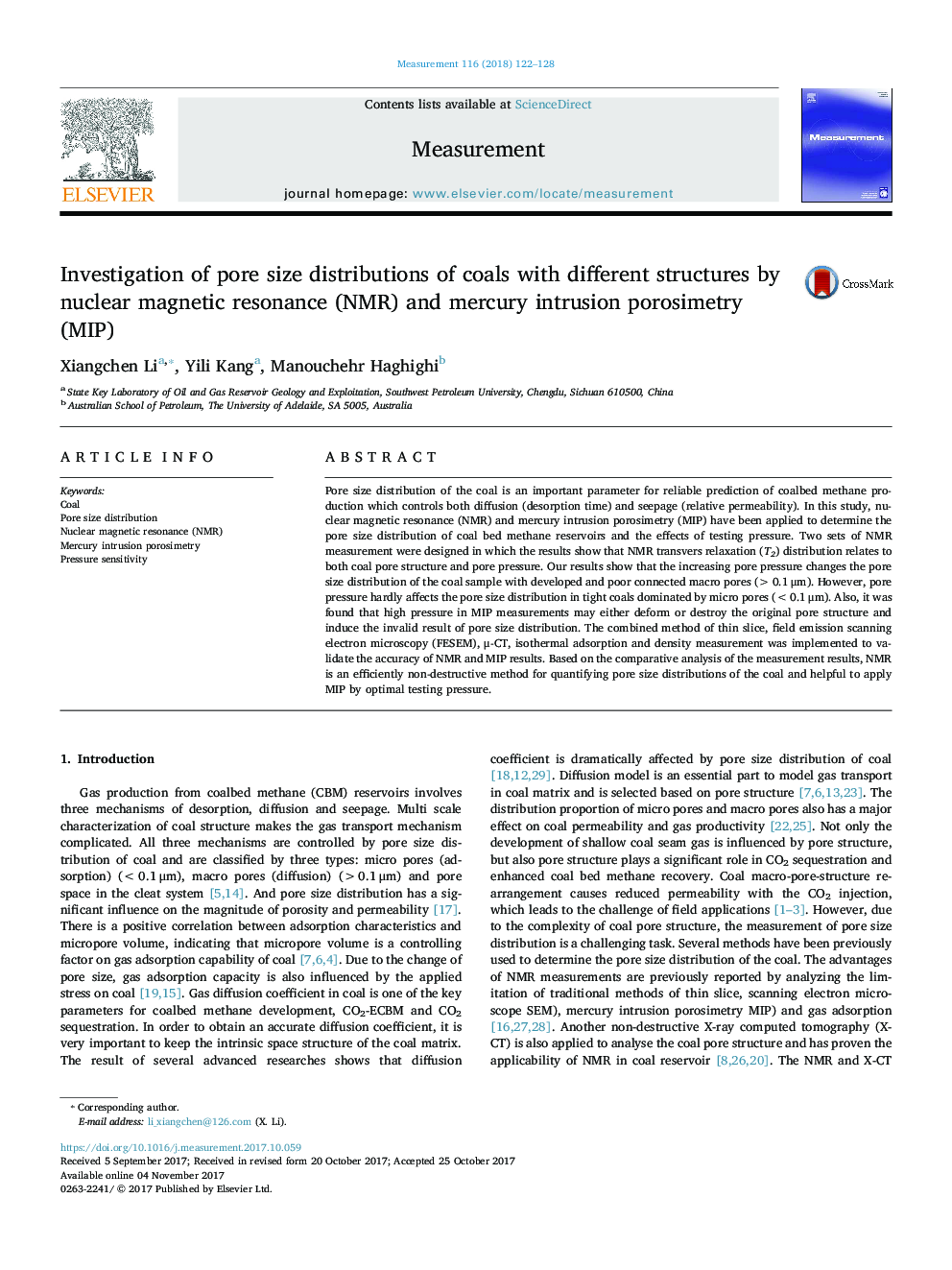| Article ID | Journal | Published Year | Pages | File Type |
|---|---|---|---|---|
| 7121964 | Measurement | 2018 | 7 Pages |
Abstract
Pore size distribution of the coal is an important parameter for reliable prediction of coalbed methane production which controls both diffusion (desorption time) and seepage (relative permeability). In this study, nuclear magnetic resonance (NMR) and mercury intrusion porosimetry (MIP) have been applied to determine the pore size distribution of coal bed methane reservoirs and the effects of testing pressure. Two sets of NMR measurement were designed in which the results show that NMR transvers relaxation (T2) distribution relates to both coal pore structure and pore pressure. Our results show that the increasing pore pressure changes the pore size distribution of the coal sample with developed and poor connected macro pores (>0.1â¯Î¼m). However, pore pressure hardly affects the pore size distribution in tight coals dominated by micro pores (<0.1â¯Î¼m). Also, it was found that high pressure in MIP measurements may either deform or destroy the original pore structure and induce the invalid result of pore size distribution. The combined method of thin slice, field emission scanning electron microscopy (FESEM), μ-CT, isothermal adsorption and density measurement was implemented to validate the accuracy of NMR and MIP results. Based on the comparative analysis of the measurement results, NMR is an efficiently non-destructive method for quantifying pore size distributions of the coal and helpful to apply MIP by optimal testing pressure.
Keywords
Related Topics
Physical Sciences and Engineering
Engineering
Control and Systems Engineering
Authors
Xiangchen Li, Yili Kang, Manouchehr Haghighi,
